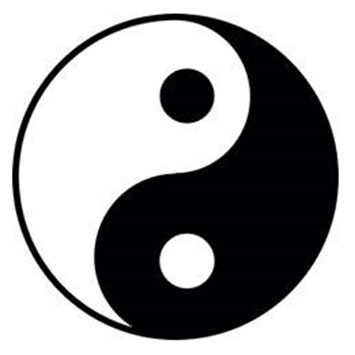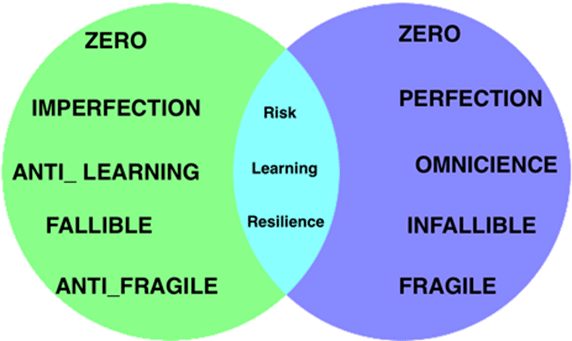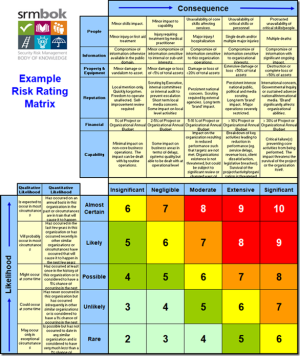The Tension of Opposites and Binaries in Risk
 We are all familiar with the symbol of the Ying/Yang – the meshing of black and white into each other signifying the merging of the two. We observe in the Ying/Yang that the white appears in the centre of the black and the black appears in the centre of the white. This is essential for an understanding the tension of opposites in being.
We are all familiar with the symbol of the Ying/Yang – the meshing of black and white into each other signifying the merging of the two. We observe in the Ying/Yang that the white appears in the centre of the black and the black appears in the centre of the white. This is essential for an understanding the tension of opposites in being.
We are also familiar with the Venn diagram where the two circles overlap and the intersection becomes the blend of the two. This is essential in understanding that the tension of opposites leads to a blend or ‘dialectic’ balance between the dynamic of opposites.
Both of these symbols capture the tensions of opposites and the necessity for balance. The temptation to be attracted to extremes is the promised security of fundamentalism (https://safetyrisk.net/understanding-extremism-and-fundamentalisms/, https://safetyrisk.net/safety-fundamentalism/).
So what has this got to do with risk?
The language, ideology and symbol of zero is an artifact of a binary mindset (https://safetyrisk.net/binary-opposites-and-safety-goal-strategy/, https://safetyrisk.net/the-binary-barnacle/, https://safetyrisk.net/reality-vs-theory-the-binary-divide/, https://safetyrisk.net/binary-discipline-and-the-easy-road-of-consequence/ ). Binary logic symbolically anchored to zero conditions a trajectory of dehumanizing others because of its extreme and sets up beliefs and values shaped by a naïve belief in human infallibility and perfectionism. The only trajectory of such a value can be the brutalizing of all those who fail.
An understanding of the tension of opposites is essential for having a balance approach to ‘tackling’ risk. The idea that humans cannot commit error or make mistakes is a fiction and delusion of this fundamentalism. The maintenance of this delusion and its symbolism is primed by the binary question ‘how many people do you want injured today’. How many are ‘sucked in’ by this silly question, rather than interrogate the assumptions of the question itself?
The power of the zero delusion is maintained by naïve language like ‘safety is a choice you make’ as if humans have control over what is unconscious and external to themselves. I recently saw a Teir 1 Construction company Front Line Leaders Training Program being delivered by a prominent consulting firm arguing that the conscious mind could ‘control’ the unconscious (they used the word ‘subconscious’ not knowing the difference). Wow, how do people accept such nonsense unless primed by the symbolism of zero and its associated acceptance of absolutes? The zero delusion is also maintained by the articulation of studying risk as ‘safety science’, in itself a delusion that control is as simple as understanding some law-like ability to control randomness. The language maintains a denial of human subjectivity and sustains the belief that there is a neutral position when it comes to understanding risk and human decision making.
The reality that ‘tackling’ risk is all about the tension of opposites. As long as Zero loves the language of ‘control’ it will never cope with randomness and fallibility. The ideology of zero is positioned against learning because risk is a necessity of learning. Those who are anti-risk are also anti-learning, this is the paradox of being human in a world of uncertainty and fallibility. The denial of grey takes humans away from the realities and challenges of risk. The tension of opposites is illustrated below.
One of the weaknesses of Kahnemann’s book Fast and Slow is that it proposes a binary notion for the human mind, called system 1 and system 2. However, we all know intuitively that there is plenty of grey between fast and slow, that humans spend most of their time between systems 1 and 2 rather than being in either system or at the extremes. This is the value of heuristics. I tried to capture this in my model of One Brain Three Minds (watch below). Until Safety moves from the delusion that it can ‘fix’ and ‘control’ this dilemma of opposites and randomness it will always fall into blame and normalize safety as a brutal activity. It is in the middle ground that we find true resilience, where the rejection of binary thinking and language brings growth, maturity and human development. It is in acknowledgement of the tension of opposites that the human struggle for maturity is motivated. It is in the juggling of opposites that we best develop empathy rather than terror and domination, where humans are not expected to be perfect but enabled to be human. Maturity and wisdom comes in the tension of opposites not the perfection of absolutes.
One Brain Three Minds from Human Dymensions on Vimeo.





Do you have any thoughts? Please share them below